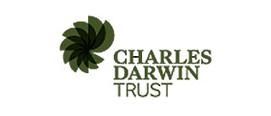- View more resources from this publisher
 Charles Darwin Trust
Charles Darwin Trust
Module 3: Hedgerows
Produced by the Charles Darwin Trust, the activities in these materials help students to consider biodiversity within a habitat. To observe change over time, in 1846 Darwin planted a hedge at Down House. Twenty years later, he surveyed the hedge and recorded those species that had disappeared and new plant arrivals. A survey in 2006 showed even greater plant diversity as groups of organisms formed discrete, and overlapping, associations, communities and colonies.
In these activities, students design an experiment which will show that plants growing in a hedgerow change over time and how this change affects the biodiversity of the hedge. They then survey a hedge, or other habitat, to obtain information on its biodiversity as well as its physical factors such as soil type and light levels. Students are encouraged to consider the plant adaptations found and discuss how these helped the plant to become established in the hedge. Finally, a role-play activity considers the benefits of planting hedges to increase biodiversity and how the decline in hedges has had an impact on wildlife.
Show health and safety information
Please be aware that resources have been published on the website in the form that they were originally supplied. This means that procedures reflect general practice and standards applicable at the time resources were produced and cannot be assumed to be acceptable today. Website users are fully responsible for ensuring that any activity, including practical work, which they carry out is in accordance with current regulations related to health and safety and that an appropriate risk assessment has been carried out.
Downloads
-
Hedgerows 2.23 MB
-
Hedgerows presentation 3.09 MB





